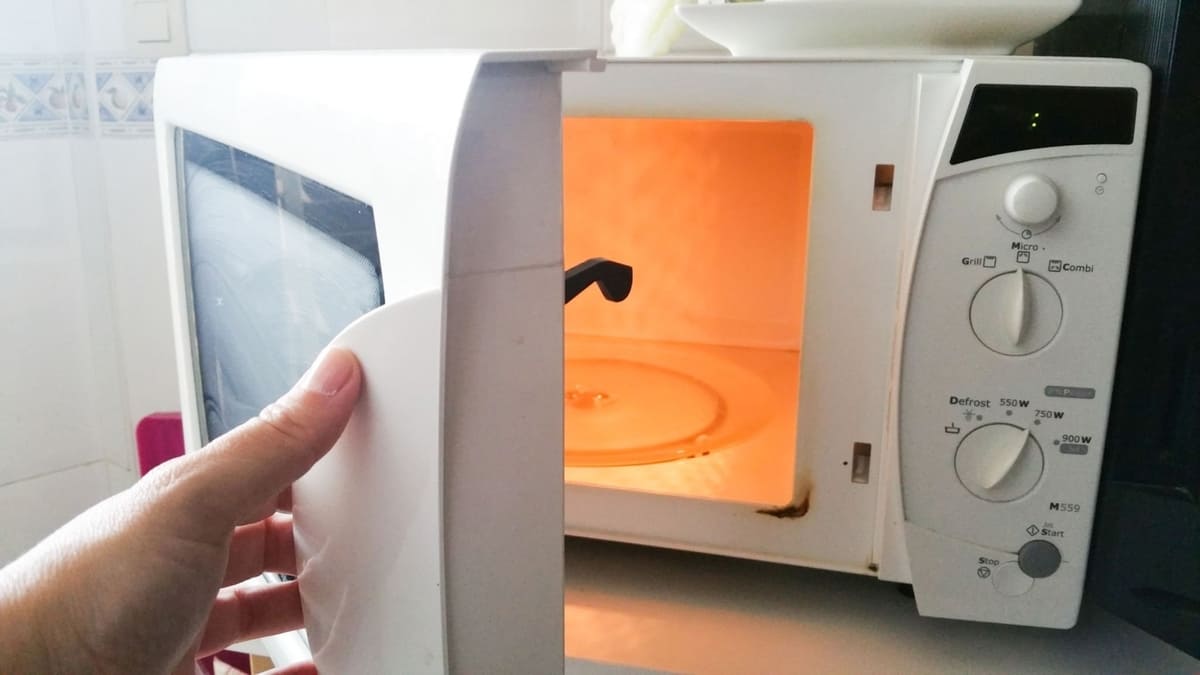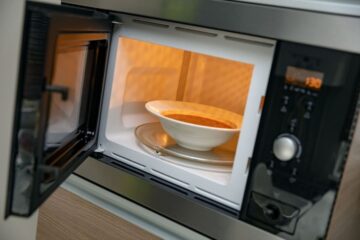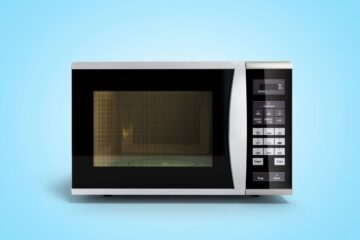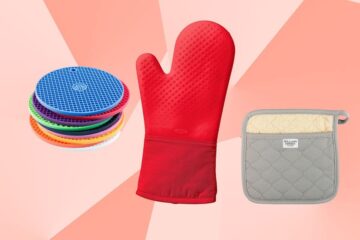Microwaving is a quick and convenient way to heat up food. However, it can be confusing to know what kitchenware is safe for microwave use. One common question is, “Can you microwave silicone?” The answer is yes, but there are important safety tips to keep in mind to avoid potential hazards.
In this article, we will explore the properties of silicone, what makes it safe for microwave use, potential dangers of microwaving silicone, how to safely microwave silicone, and other uses of silicone in the kitchen. We will also address frequently asked questions related to using silicone in the microwave.
What is Silicone and its Properties?
Silicone is a synthetic polymer made up of silicon, oxygen, carbon, and hydrogen. It is a flexible, rubber-like material that is heat-resistant, non-stick, and non-reactive. Silicone can withstand high temperatures and is commonly used in cookware, bakeware, utensils, and food storage containers.
Can You Put Silicone in the Microwave?
Factors that Affect Microwave Safety
Before microwaving any material, it is important to consider its microwave safety. Factors that affect microwave safety include the material’s heat resistance, its ability to conduct heat, and its molecular structure. Microwaving materials that are not microwave-safe can cause damage to the microwave or pose a safety risk.
What Makes Silicone Safe for Microwave Use?
Silicone is safe for microwave use because it is heat-resistant and does not react with food. It does not contain any harmful chemicals or toxins that can leach into food when heated. In addition, it does not conduct heat, which means it will not get hot enough to cause burns or fires in the microwave.
Types of Silicone Safe for Microwave Use
Not all types of silicone are safe for microwave use. It is important to choose silicone that is labeled as microwave-safe or heat-resistant. Some common types of silicone that are safe for microwave use include:
- Food-grade silicone: This type of silicone is specifically designed for use with food and is non-toxic.
- High-temperature silicone: This type of silicone can withstand high temperatures, making it ideal for use in the oven or microwave.
- Silicone lids and covers: These are designed to be placed over bowls and plates for microwaving and are usually labeled as microwave-safe.
Potential Dangers of Microwaving Silicone
Release of Harmful Chemicals
While silicone itself does not contain harmful chemicals, some additives or fillers used in silicone products may be toxic or carcinogenic. When heated, these chemicals can leach into food and pose health risks.
Melting or Deformation of Silicone
Microwaving silicone beyond its recommended temperature can cause it to melt or deform. This can cause damage to the microwave, as well as pose a safety risk.
Fire and Burn Risks
Microwaving certain types of silicone, such as those that contain metal or foil, can cause fires or burns. The metal can spark and ignite, causing a fire, while the foil can cause the silicone to overheat and burn.
How to Safely Microwave Silicone?
Choosing the Right Type of Silicone
Before microwaving silicone, ensure that it is labeled as microwave-safe or heat-resistant. Avoid using silicone products that contain metal or foil, as these can pose a fire risk. Check the product’s label or packaging for information on its recommended temperature range.
Understanding Microwave Wattage
Microwave wattage can affect cooking times and temperature. Higher wattage microwaves cook food faster, while lower wattage microwaves cook food slower. Always refer to the manufacturer’s instructions for cooking times and temperatures.
Preheating and Cooking Times
When microwaving silicone, it is important to preheat it properly and follow recommended cooking times to ensure safe use. Here are some tips to help you safely microwave silicone:
Choosing the Right Type of Silicone
When choosing silicone products for microwave use, it is important to look for those that are labeled as microwave safe. Some silicone products may not be suitable for use in the microwave, and using them can be dangerous.
Understanding Microwave Wattage
Different microwaves have different wattage levels, which can affect cooking times. Be sure to check your microwave’s wattage and adjust cooking times accordingly. Most microwave-safe silicone products will have recommended cooking times based on the wattage of your microwave.
Preheating
Before microwaving silicone, it is important to preheat it properly. This helps ensure that the silicone heats evenly and prevents hot spots that can cause melting or deformation. To preheat silicone, simply place it in the microwave for a short period of time, such as 10-20 seconds, before adding your food.
Cooking Times
When cooking with silicone in the microwave, it is important to follow recommended cooking times. Overcooking can cause the silicone to melt or become deformed, while undercooking can leave your food cold and unappetizing. Follow the cooking times provided with your silicone product, or check with the manufacturer for recommended cooking times.
Checking for Damage and Wear
Over time, silicone products can become worn or damaged, which can affect their ability to safely withstand microwave heat. Before using any silicone product in the microwave, be sure to check it for signs of wear, such as cracks, tears, or discoloration. If you notice any damage, it is best to avoid using the product in the microwave.
Other Uses of Silicone in the Kitchen
In addition to being microwave safe, silicone is a versatile material that can be used for a variety of kitchen tasks. Here are some common types of silicone kitchenware and their advantages:
Advantages of Silicone Cookware
Silicone cookware has become increasingly popular in recent years due to its many advantages. Some of the benefits of using silicone cookware include:
- Non-stick surface: Silicone is naturally non-stick, making it easy to clean and preventing food from sticking.
- Heat-resistant: Silicone can withstand high temperatures without melting or deforming, making it suitable for use in the oven, microwave, or on the stovetop.
- Lightweight: Silicone is lightweight and easy to handle, even when filled with food or liquid.
- Durable: Silicone cookware is long-lasting and can withstand repeated use without becoming damaged or worn.
Common Types of Silicone Kitchenware
Some common types of silicone kitchenware include:
- Baking mats: Silicone baking mats can be used to line baking sheets, making it easy to remove baked goods and preventing them from sticking.
- Cooking utensils: Silicone cooking utensils, such as spatulas and spoons, are non-scratch and safe to use on non-stick surfaces.
- Muffin cups: Silicone muffin cups can be used to bake muffins, cupcakes, and other baked goods without the need for paper liners.
- Ice cube trays: Silicone ice cube trays are flexible and easy to remove, making it easy to pop out individual ice cubes.
How to Care for Silicone Cookware?
To ensure the longevity of your silicone cookware, it is important to care for it properly. Here are some tips to help you care for your silicone cookware:
- Hand wash: Most silicone cookware is dishwasher safe, but hand washing is recommended to prolong its lifespan.
- Avoid sharp objects: Do not use sharp objects, such as knives or scissors, on silicone cookware, as this can damage the surface.
- Avoid extreme temperatures: While silicone can withstand high temperatures, it is best to avoid exposing it to extreme temperature changes. Do not place hot silicone cookware in cold water, as this can cause it to warp or crack.
Store properly
To prevent deformation, store silicone cookware flat or hang it up by its handles.
Avoid grease buildup: Grease and oil can build up on silicone cookware over time, so it is important to clean it thoroughly after each use. Use hot, soapy water and a non-abrasive sponge or cloth to clean it. If any stubborn stains persist, you can use a baking soda and water mixture or a mild abrasive cleaner.
Avoid using abrasive materials: Avoid using abrasive scrubbers or metal utensils on silicone cookware, as this can cause scratches or damage to the surface
Conclusion
Silicone is a popular material for kitchenware and other household items due to its durability, flexibility, and resistance to heat. While some types of silicone can be safely used in the microwave, it is important to understand the potential risks and how to use it safely. Always choose silicone that is labeled as safe for microwave use, and pay attention to cooking times and wattage to avoid damage or deformation. By taking proper care of your silicone cookware, you can enjoy its benefits for many years to come.
Related Queries
Is it Safe to Use a Silicone Lid on a Microwaveable Bowl?
Yes, it is safe to use a silicone lid on a microwaveable bowl, as long as the lid is labeled as safe for microwave use. Always follow the manufacturer’s instructions and pay attention to cooking times and wattage.
Can You Reheat Food in a Silicone Container?
Yes, you can safely reheat food in a silicone container, as long as the container is labeled as safe for microwave use. Again, be sure to follow the manufacturer’s instructions and pay attention to cooking times and wattage.
What is the Best Way to Clean Silicone Kitchenware?
The best way to clean silicone kitchenware is to hand wash it with hot, soapy water and a non-abrasive sponge or cloth. Avoid using abrasive materials or metal utensils, as these can scratch or damage the surface.
Can Silicone Ice Cube Trays Be Used in the Microwave?
No, silicone ice cube trays should not be used in the microwave, as they are not designed for microwave use and can melt or deform under high heat.




